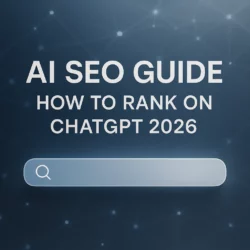The Fall 2024 open enrollment period is a critical window for health insurance providers to engage with potential and current members to capture market share. During this time, consumers have the opportunity to review, change, or renew their health insurance plans. For health insurance providers, this presents both challenges and opportunities to differentiate their offerings and drive enrollment. A well-crafted marketing strategy can make all the difference in reaching the right audience and guiding them toward informed decisions.
Open enrollment campaigns can be highly competitive, and standing out amidst the noise is essential. Health insurance providers need to embrace a data-driven, multi-channel approach to ensure they reach consumers where they are. Digital marketing, particularly with its scalability and targeting precision, is crucial to success. Let’s delve into how health plans can prepare their marketing strategies for this important period and ensure they are ready to optimize enrollment numbers.
Understanding Open Enrollment
Open enrollment is the time of year when individuals can enroll in or change their health insurance plans without facing restrictions. For Fall 2024, key dates include the start of enrollment on November 1 and the final deadline on December 15. Missing this window can leave consumers with limited options, making it essential for marketers to promote early and consistent communication.
During this period, consumers are often overwhelmed with choices, making it crucial for health plans to simplify their messages and provide clear value propositions. By understanding the timeline and the pain points consumers face during this period, marketers can develop campaigns that resonate and guide potential members through the decision-making process.
Crafting a Compelling Marketing Strategy for Open Enrollment

Segmentation and Targeting: Understand Your Audience
One of the most critical steps in preparing for open enrollment is understanding your audience. Health insurance providers must leverage past enrollment data and analyze healthcare trends to identify key demographics, including age groups, health conditions, income levels, and geographic locations. For instance, some consumers may prioritize affordability, while others seek comprehensive coverage. Tailoring messages to address these varying needs increases the likelihood of conversions.
Audience segmentation can be achieved through data analysis tools and CRM systems, which help marketers deliver personalized experiences. By dividing the audience into distinct segments, health plans can create targeted campaigns that speak directly to the needs and preferences of each group. This personalization ensures that marketing efforts are more relevant, increasing engagement and driving better results.
Multi-Channel Approach
A successful marketing strategy for open enrollment must leverage multiple channels to reach potential members effectively. Relying on a single medium can limit reach and engagement, especially when targeting a diverse audience.
- Email marketing can be used to send reminders and provide personalized plan options.
- Social media offers an interactive platform where health plans can share educational content, respond to questions, and build a community.
- Direct mail may still resonate with older demographics who prefer traditional communication.
- Webinars can be a powerful tool to explain plan benefits and answer common questions in real-time, building trust with potential members.
By diversifying outreach channels, health plans increase their chances of reaching the right people at the right time.
Personalization and Member Engagement
Personalization is key to improving member engagement during the open enrollment period. Consumers expect tailored experiences, and health plans can leverage CRM systems and marketing automation platforms to deliver relevant content. Personalizing emails, ads, and landing pages can significantly boost conversion rates, as consumers are more likely to engage with content that speaks directly to their needs.
Tools like marketing automation platforms enable health insurance providers to scale personalized interactions without increasing the manual workload. For instance, automated email sequences based on member actions (e.g., visiting a health plan comparison page) can ensure timely follow-ups that drive engagement.
Website Organic Traffic and Positioning: The Role of SEO
A strong SEO strategy is crucial for driving organic traffic and ensuring your health plan ranks highly in search results during open enrollment. By optimizing your website with relevant keywords like “health insurance open enrollment 2024” and focusing on content that addresses common consumer questions, you can capture high-intent users and build trust.
Additionally, technical SEO factors like fast load times, mobile responsiveness, and local SEO targeting specific regions are key for a positive user experience and higher search rankings. Investing in SEO early helps create a consistent flow of organic traffic and positions your health plan as a go-to resource during the open enrollment period.
Digital Advertising
Paid digital advertising is a crucial tool for capturing the attention of potential members. Platforms like Google Ads and social media networks offer precise targeting options, allowing health plans to reach specific demographics based on factors such as location, age, and interests.
- Paid Search Ads: These ads help consumers find health plan information when they are actively searching for it. By appearing at the top of search results, they drive high-intent traffic during critical decision-making moments.
- Social Media Ads: These ads offer passive discovery opportunities. Engaging visuals and content can introduce health plans to users who may not be actively searching but are still interested in relevant services or benefits.
- Display Ads: Display ads serve as reminders, reinforcing your message and keeping your brand top-of-mind during the enrollment period. They can create multiple touchpoints with potential members as they browse online.
To maximize the effectiveness of digital advertising campaigns, it’s important to optimize ad spend around key periods leading up to enrollment deadlines. Monitoring metrics like cost-per-click (CPC) and conversion rates allows marketers to adjust strategies in real time, ensuring that ads are both efficient and impactful.
Content Marketing
Educating potential members is a crucial aspect of any open enrollment marketing campaign. Content marketing can help consumers navigate their options by providing valuable information that addresses their concerns. Creating informative blog posts, FAQs, and video tutorials can empower consumers to make more informed decisions.
For instance, blog posts on topics like “How to Choose the Right Health Plan” or “Common Mistakes to Avoid During Open Enrollment” can resonate with consumers who are unsure of their choices. Informational videos that break down complex health insurance concepts into digestible content can also increase engagement and build trust.
In addition, email newsletters with personalized content can guide users through the enrollment process, ensuring they stay informed and engaged.
Timing and Frequency
Timing is everything when it comes to open enrollment marketing. Starting too late or bombarding potential members with too much information at once can backfire. Instead, health plans should implement a phased approach, gradually increasing communication frequency as the enrollment deadline approaches.
Early outreach builds awareness, while mid-campaign messaging should focus on education and comparison tools. As the deadline nears, urgency-based messaging can drive action, encouraging consumers to finalize their enrollment before the window closes.
Current and Prospective Members Marketing
When marketing for open enrollment, it’s important to address both current and prospective members differently. Each group has unique needs and should be approached with specific strategies.

Current Members Marketing
For existing members, focus on retention by emphasizing the benefits of renewing their plans and addressing any new features or improvements. Key strategies include:
- Email Marketing: Send personalized reminders about renewal deadlines and offer plan comparison tools.
- Direct Mail: Provide detailed information on plan updates or changes for members who prefer traditional communication.
- Member Loyalty Programs: Incentivize renewals by offering perks for continued membership.
- Content Marketing: Publish blog posts or video content that addresses common questions about coverage, new benefits, or updates in their current plan.
Prospective Members Marketing
Prospective members require a more educational approach. It’s important to build trust and offer clear value propositions that differentiate your plans from competitors. Best practices include:
- Paid Search & Social Media Ads: Target specific demographics based on location, age, and income to increase awareness and drive traffic to landing pages.
- SEO & Content Marketing: Ensure that prospective members can easily find information by optimizing for terms like “best health plan” or “open enrollment options.”
- Webinars & Live Q&A Sessions: Host online events where prospects can ask questions about the plans and better understand their options.
- Comparison Tools: Offer interactive tools to help prospective members choose the right plan based on their individual needs.
By tailoring your marketing strategy to address the unique needs of both current and prospective members, you can maximize your efforts during the open enrollment period. Retaining existing members ensures stability, while attracting new members fuels growth. A balanced approach, leveraging the best digital marketing channels for each group, not only improves member satisfaction but also drives enrollment success.
Utilizing Data and Analytics
Data-driven marketing is crucial for the success of any open enrollment campaign. Health plans should leverage analytics tools to monitor campaign performance and make adjustments in real time. Key metrics to track include website traffic, conversion rates, cost-per-acquisition, and user engagement.
By analyzing these metrics, marketers can identify which channels and messages are most effective, allowing them to reallocate resources and optimize campaigns for maximum impact.
Case Study: Health Plan of San Mateo
The Health Plan of San Mateo successfully leveraged a multi-channel digital marketing strategy during the open enrollment period. By combining paid search, social media ads, and educational content, they were able to increase enrollment rates by 20%. Their campaign focused on simplifying the enrollment process through personalized messaging and user-friendly landing pages.
For example, targeted ads directed users to a customized landing page that highlighted the most relevant plan options based on their demographics. This approach reduced confusion and improved conversion rates. The success of this campaign demonstrates the importance of tailored, data-driven strategies during open enrollment.
Learn more about the Health Plan of San Mateo’s success on our portfolio page.
Conclusion: Maximizing Enrollment Success
Preparing for open enrollment requires a well-planned, data-driven marketing strategy. By understanding your audience, leveraging multiple channels, and personalizing your messaging, health insurance providers can maximize their enrollment success. Start early, stay agile, and use real-time data to optimize your efforts.
Need help with your Health Plan’s marketing strategy for open enrollment? Contact Jives Media to learn how we can help you create a winning campaign.
FAQs: Optimizing Health Plan Enrollment Marketing

What are the most effective channels for reaching potential members?
The most effective channels include email marketing, social media, paid search, and direct mail. Utilizing a multi-channel approach ensures maximum reach and engagement.
How early should marketing efforts begin for open enrollment?
Marketing efforts should begin at least three months before open enrollment to build awareness. This allows enough time to educate potential members and address any concerns they may have before the deadline.
What are common pitfalls in marketing health plans during open enrollment?
Common pitfalls include starting too late, using generic messaging, and failing to track campaign performance. To avoid these, start early, personalize your messaging, and use data analytics to continually optimize your campaigns.






